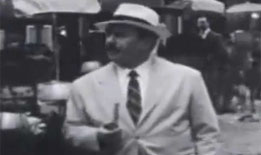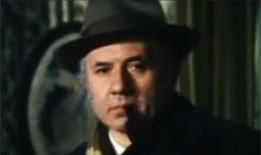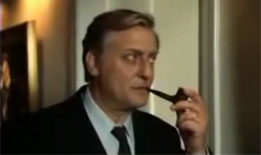Commissaire Maigret in film and television. A brief survey of the damage.
One of the literary characters closest to my heart is detective Jules Maigret, Commissaire of the Paris Brigade Criminelle, protagonist of 75 novels and 28 short stories written (by one Simenon) between 1931 and 1972. Maigret is a peaceable but authoritative type. Forthright and a big eater, he nonetheless has the precision of a fencing master. He is one of those people who inspires trust at first sight, in spite of his intelligence. And who nobody dares to question in spite of the trust he inspires. You could say he is the archetype of the perfect patriarch. In my blog I talk more about him and how his approach to investigations, or the world famous Maigret Method.
But we readers of Maigret (and there must be quite a few million of us) have no idea of what he looks like. In 40 years of writing, Simenon did not leave any clues. We don?t know whether he is tall or short, whether he is bald, whether he has a moustache. We don't know what his voice sounds like, how he walks or how he leans on the counter at the bar when he orders a Calvados. This means that Maigret has as many ways of talking, walking and leaning on the counter as he does readers. And each one is just as subjective, fortuitous and definitive as the rest. Each of us is convinced: my Maigret can only be just so.
And then a film comes along to stuff it all up. I?m not talking about the typical dilemma of what's better, the film or the book? This is about the difference between imagining a character yourself or having others imagine him and basically impose him on you, even if they do it with a huge amount of talent. Because a film involves hundreds of people giving their opinion. In the script, he might start out short and fat. The directors say no, not short, it looks wrong with the actress. The producer says he has to be tall, slim and handsome, and throws out a name or two. The wardrobe department dresses him smartly, makeup gets rid of the bags under his eyes, lighting evens out his skin tone.
These are some of the abuses that film and television have inflicted on my poor Maigret:
La Nuit du Carrefour
In his first film appearance, a year before the National Socialist victory in Germany, Jean Renoir gives him a little Fürer moustache.
Dédé de Montmartre
Given Simenon?s understanding with the Nazis, several Maigret films were made during the German occupation of Paris, featuring the popular singing icon Albert Préjean. The sober commissioner becomes an old collaborationist dandy.
The Man on the Eiffel Tower
The war ends and the Brits pick up Maigret and transform him into a cheerful fatty. Charles Laughton. Great, but Maigret looks like Santa Claus. Note the implausible ending.
Maigret tend un piège
In the fifties and sixties, Maigret becomes a large, serious type again. The French add glamour with Jean Gabin, who is too smooth. The English take it away with Ruppert Davies, who is too dry. The Germans add a small gnome-like nose (impossible for a Frenchman).
Maigret et l'Affaire Picpus
But the sixties belong to the monumental (literally and figuratively) Gino Cervi, who played Maigret in the mythical Rai series, which was on air for eight years. The Italians take the excess weight and the wardrobe a bit to far: they put him in light-coloured suits and a panama hat (Maigret only wore a light-coloured hat once in his life, reluctantly, because his wife had bought it for him) but they hit the spot with his grumpiness and that way of walking that betrays adults who were once awkward kids (he is closer to my Maigret).
Also in the sixties, Maigret made his definitive entry into TV, through films and series. According to Simenon himself, the best Mme Maigret is the one in a Japanese series in which the commissionaire loses forty kilos, moves to Tokyo, and becomes Magure. But the quintessential TV Maigret is French. First, Jean Richard, who played him during a period of 23 years in which television shifted from black and white to Technicolor, the birth control pill was legalised and Mitterrand almost exhausted his second term. Then came Bruno Crémer who remained the undisputed king for a further 14 years, taking Maigret through the turn of the century and becoming, for generational reasons, the most popular Maigret on YouTube. Both of these, handsome and humourless, like somewhat older James Bonds, continue the unfortunate habit of turning Maigret into an icon of unflawed masculinity.








